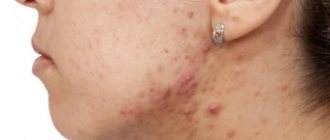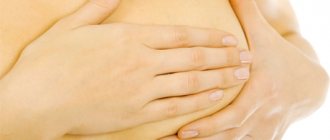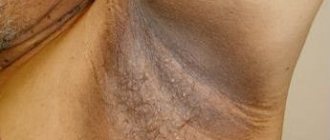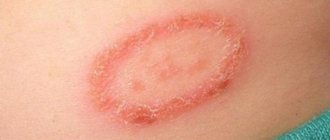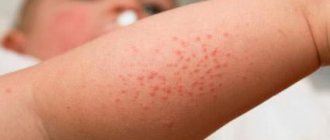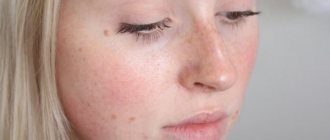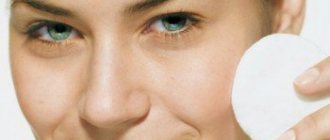Wrinkle on the bridge of the nose and character
Wrinkles on the bridge of the nose appear when a person often wrinkles and raises his eyebrows. This is how thoughtfulness, resentment, and surprise are usually expressed. It is believed that such wrinkles are the last to appear in cheerful, open and sociable people, and in those who are often offended, stubborn or have a habit of overthinking, these facial folds are one of the first to form.
If a person has a clearly visible wrinkle on the bridge of his nose, despite his young age, it means that he has a very contradictory character. By the wrinkle on the bridge of the nose, you can identify a stubborn, touchy or too closed person who is not in harmony with himself and the world around him.
Small wrinkles along the entire bridge of the nose indicate that the person is very serious, is preoccupied with some problems, or that his work involves constantly solving complex problems.
If a wrinkle goes to the bridge of the nose from the middle of the forehead, this is a sign of a person prone to deep introspection. Such a person is very critical of himself and the people around him, and sees much more negative than positive in everything. You can easily offend him even with a careless word, and it is very difficult to earn forgiveness from such a person.
If a disproportionate pattern of wrinkles is visible on the bridge of the nose, you need to pay attention to which direction it is shifted.
For theorists, thoughtful and intelligent people, the vertical folds on the bridge of the nose are located closer to the right eyebrow. Often such people have a very broad outlook, which, however, is very rarely used in practice. Wrinkles shifted towards the left eyebrow indicate that a person is not confident in himself and has some kind of complex. Such people should read the article How to deal with low self-esteem.
A special sign is a triangle of wrinkles on the bridge of the nose. This symbol is usually “marked” by people prone to philosophical thinking, scientists and true sages.
Philosophical stories...
Philosophers say that wrinkles are the lines of human life. It is wrinkles that allow us to judge a person and form a certain idea about him. Also, others evaluate facial expressions and facial expressions. When facial expressions change, tension in the facial muscles occurs. Naturally, wrinkles form as a result of this. Experts in psychology can easily talk about the character and personal characteristics of people by looking at wrinkles.
Science or lies?
For as long as humanity has existed, they have tried to determine the character of people according to many parameters. Palmistry and numerology, astrology and names, all this sometimes makes one doubt the correctness of the conclusions. However, it is physiognomy that is truly real.
Wrinkles on the bridge of the nose and health
However, wrinkles on the bridge of the nose do not always appear solely from facial expressions. Sometimes these skin folds indicate health problems.
If a person has wrinkles in the shape of crosses on the bridge of his nose, this indicates that something is wrong with his spine. The cause may be osteochondrosis, osteoporosis and other diseases associated with vertebral deformation.
Horizontal wrinkles above the bridge of the nose often appear in people suffering from migraines, and vertical wrinkles in those who have heart rhythm disturbances, i.e. arrhythmia. Such wrinkles are especially noticeable in people who have had a heart attack.
Age-related skin changes
The birth of wrinkles occurs at both 10 and 20 years old - they are called facial wrinkles. The cause is frequent contraction of the facial muscles. To prevent this, do not unnecessarily grimace, wince or make faces.
According to statistics, at about 15-20 years of age, a person begins to develop so-called “crow’s feet”
From the age of 25, wrinkles appear on the cheeks in the dimple area. Closer to 40, they become longer and turn into nasolabial folds.
At 30, the appearance of “folds of grief” is observed . They disfigure any person, as the face becomes sad.
At the age of 40, so-called monkey wrinkles appear above the upper lip and chin.
How to prevent wrinkles on the bridge of your nose
As you know, any illness is always easier to prevent than to cure, so if you do not want to become the owner of wrinkles on the bridge of your nose at an early age, listen to the following recommendations.
- In sunny weather, always wear safety glasses to prevent the sun from causing you to squint.
- Use a special sunscreen that fights skin aging caused by ultraviolet rays.
- Watch your emotions.
- When working at a computer, reading or watching TV, use glasses if you do not see well enough, as constant squinting causes wrinkles to form on the bridge of the nose.
- If you have dry skin on your face, use moisturizing creams, as excessive dryness of the epidermis accelerates the appearance of wrinkles.
- Drink more plain water as it rids your body of harmful toxins. By the way, if you are losing weight, then this advice is doubly useful (more about this in the article on the effect of water on weight loss).
- Don't smoke or drink alcohol, and always try to eat nutritiously.
The work of facial muscles
Tension or weakening of one of the facial muscles over time affects the face in the form of changes in the skin. Moreover, wrinkles form perpendicular to these muscles.
Both cosmetic procedures and cosmetics, as well as folk remedies, will help in eliminating facial wrinkles.
Cosmetology has long used Botox acupuncture - a procedure during which a paralyzing muscle injection is administered. After it, wrinkles are smoothed out, and facial muscles are in a weakened state for a long time.
As for cosmetics, some of them contain botulinum toxin, which has an effect on facial muscles and nerve endings.
Physiognomy: external signs of stress
IMPORTANT: Some people are masters at hiding signs of stress, which can only be recognized by those closest to them.
However, general aspects :
- Excessively pursed lips
- Noticeable tension in the masticatory muscles
- Lethargy in facial expressions or, conversely, excessive activity. In any case, facial expressions should contrast with the usual state
- Dilated pupils
- Redness or paleness of the face
Lethargy of facial expressions is a common sign of stress according to physiognomy
Physiognomy: external signs of sadists
Psychiatrist Cesare Lombroso, having studied the portraits of representatives of the underworld, identified the following signs:
- Narrow and sometimes lumpy forehead
- Deep-set eyes
- Massive eyebrows that resemble rollers in appearance
- Protruded lower jaw. In this regard, a massive chin is also observed.
Since ancient times, people with such characteristics have been disliked, considering them to be the personification of small intelligence and brute physical strength. People around them quite often come into conflict with such people.
Irma Grese - an example of sadism in physiognomy - has a narrow forehead and deep-set eyes
Such individuals often have look . They may rarely blink, so it can be difficult to maintain such a gaze.
Andrei Chikatilo - an example of a heavy look in physiognomy
The lip may be protruded - this sign indicates frequent irascibility.
Jeffrey Lionel Dahmer is a serial killer whose lower lip, according to physiognomy, is a sign of a temper.
IMPORTANT: Of course, there are many examples that people with similar signs turn out to be harmless. This list is only a rough guide.
Previously, we published another article in which we cited various signs that a novice physiognomist should focus on. We hope that these works will help you better understand those around you, making your life much easier.
Physiognomy: external signs of mental disorders
Lack of facial expressions may be a sign of schizophrenia. Of course, a person should not grimace every minute. However, if he does not react in any way to the events around him, then you should be wary.
Physiognomists often call the absolute absence of facial expressions a sign of schizophrenia.
On the contrary, reactions that are in no way related to the circumstances can also be an alarm bell. For example, laughter for no reason. Irritability, anger, fear for no reason, reflected on the face, should also alert you.
IMPORTANT: Sudden changes in mood are especially suspicious.
According to physiognomy, laughter for no reason is one of the signs of mental disorders.
Excessive fatigue , clearly visible on the face, can also be one of the signs of disorders. Of course, we all get tired from time to time, but chronic depression, reaching the point of apathy, is not a healthy sign.
Chronic apathy, visible on the face, is one of the physiognomic signs of a mental disorder
It is not uncommon for people with mental disorders to experience hallucinations . This can be determined by the gaze directed to where there is nothing particularly interesting. At the same time, the gaze expresses curiosity, surprise, horror.
A look filled with horror for no reason is, according to physiognomy, a sign of disorder
